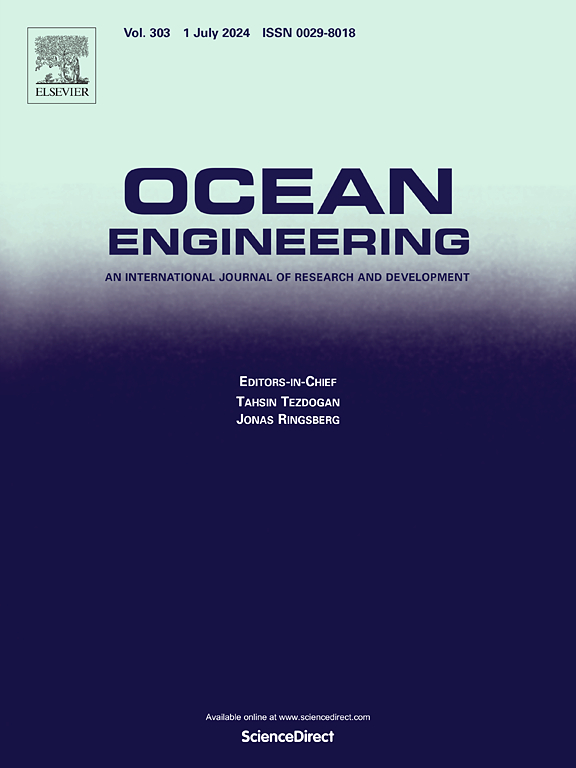Experimental investigation on the breakout force rapid prediction of underwater vehicles considering bottom-sitting parameters
IF 5.5
2区 工程技术
Q1 ENGINEERING, CIVIL
引用次数: 0
Abstract
Submersibles are important equipment for marine scientific research and geological exploration. During the process of bottom-sitting, the base will interact with the seabed soil and sink into the seabed. The suction of the soil, namely the breakout force, will inhibit the lifting of submersible. If the lifting force is insufficient, it is difficult to recover the submersible, causing huge economic and personnel losses. This paper designs a model test device to simulate the submersible bottom-sitting and lifting process in the laboratory, including a lifting simulator, a seabed model and a landing gear model. Using force sensors and pore pressure sensors to quantitatively measure the breakout force and negative pore water pressure on the submersible, the components of the breakout force are analyzed and the lifting process of submersible is studied. The influence of parameters on breakout force such as sitting area, sitting weight, sitting time, lifting velocity, sidewall shape, and burial depth is studied, and the mechanism is analyzed. Based on the experimental results, a multi parameter coupling correction is performed on the existing empirical formulas for improving the accuracy of predicting breakout force. The prediction results of three empirical formulas for breakout force are compared, and the prediction errors are analyzed. The achievement can provide certain reference for engineering design of submersible.
考虑坐底参数的水下航行器突破力快速预测实验研究
潜水器是海洋科学研究和地质勘探的重要设备。在坐底过程中,基底会与海底土壤相互作用,沉入海底。土壤的吸力,即突破力,会抑制潜水器的提升。如果举升力不足,则难以回收潜水器,造成巨大的经济和人员损失。本文设计了一种在实验室模拟潜水器坐底升降过程的模型试验装置,包括升降模拟器、海底模型和起落架模型。利用力传感器和孔隙压力传感器定量测量了潜水器上的破断力和负孔隙水压力,分析了破断力的组成,研究了潜水器的提升过程。研究了坐位面积、坐位重量、坐位时间、提升速度、侧壁形状、埋深等参数对破断力的影响,并分析了机理。在实验结果的基础上,对已有的经验公式进行了多参数耦合修正,以提高断裂力预测的精度。比较了三种断裂力经验公式的预测结果,并对预测误差进行了分析。研究成果可为潜水器的工程设计提供一定的参考。
本文章由计算机程序翻译,如有差异,请以英文原文为准。
求助全文
约1分钟内获得全文
求助全文
来源期刊

Ocean Engineering
工程技术-工程:大洋
CiteScore
7.30
自引率
34.00%
发文量
2379
审稿时长
8.1 months
期刊介绍:
Ocean Engineering provides a medium for the publication of original research and development work in the field of ocean engineering. Ocean Engineering seeks papers in the following topics.
 求助内容:
求助内容: 应助结果提醒方式:
应助结果提醒方式:


